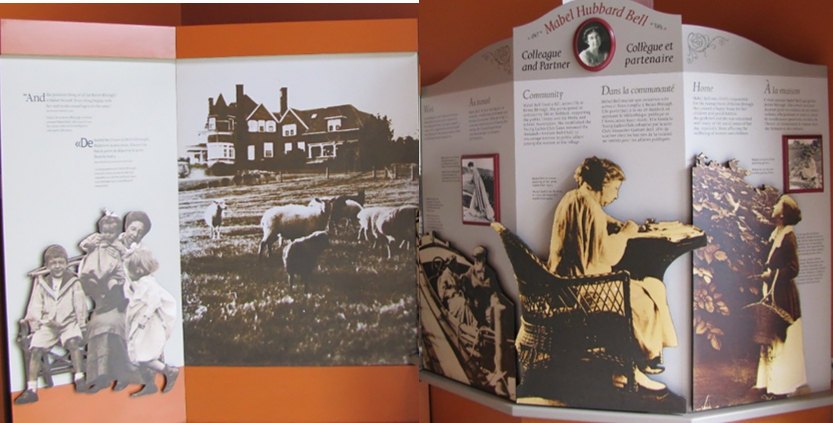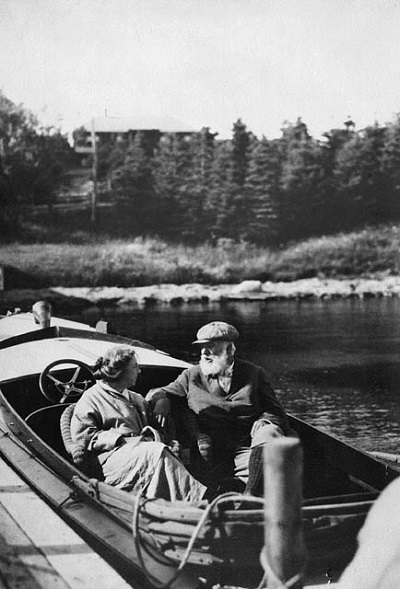Mabel Hubbard Bell National Historic Person (1857-1923)
Mabel Hubbard Bell was designated a national historic person in 2017.
Historical importance: Wife and collaborator of Alexander Graham Bell, community organiser and philanthropist.
Commemorative plaque: 559 Chebucto, Baddeck, Nova Scotia Footnote1
Mabel G. Hubbard Bell was an influential community organizer and philanthropist. After losing her hearing as a child in Massachusetts, she continued to speak and learned to read lips with the encouragement of her parents, who advocated the oral method of education for the deaf. She married inventor Alexander Graham Bell in 1877, and provided crucial support for his scientific research in the United States and at their Beinn Bhreagh estate. While living in Cape Breton, Mabel Bell helped establish the Young Ladies' Club of Baddeck in 1891, as well as the first Montessori classes, and the earliest home and school association in Canada.


© Library and Archives Canada/PA-089114
Mabel Hubbard Bell
Mabel Gardiner Hubbard Bell was a leader in her adopted community of Baddeck, Nova Scotia, and the active partner of her husband, inventor Alexander Graham Bell. After losing her hearing as a child, American-born Mabel continued to speak and learned to read lips with the encouragement of her parents, who advocated the oral method of education for the deaf. She provided crucial support to Alexander Bell's work as an inventor and scientist, personally financing the Aerial Experiment Association (AEA), which contributed to early aviation history by creating four airplane prototypes. One of these, the Silver Dart, achieved the first controlled, powered flight in Canada. In addition, Mabel Bell helped establish the Young Ladies' Club of Baddeck in 1891, as well as the first Montessori classes, and the earliest home and school association in Canada.
Born Mabel Gardiner Hubbard in Boston in 1857, she lost her hearing at the age of five as a result of scarlet fever. Rather than teach her sign language, her parents chose the oral method of deaf education, by which Mabel continued to speak and learned to read lips. One of her later speech tutors was Alexander Graham Bell, whom she married in 1877. During their engagement, he partnered with Mabel's father and another investor on an invention that led to the invention of the telephone. Mabel understood the technical aspects of his innovations and took an active interest in his work, encouraging commercial applications.
The Bell family lived in Washington, DC and summered in Baddeck Bay, Nova Scotia, after 1885, eventually building a home called Beinn Bhreagh Hall on Cape Breton Island. There, Alexander Bell conducted tetrahedral kite experiments, as part of broader efforts to understand the principles of flight. Mabel Bell recruited young engineers to help him, and funded the AEA, which was created in 1907.
Mabel Bell added considerably to her Nova Scotia community by helping to establish the Young Ladies' Club of Baddeck in 1891, which is still active today as the Alexander Graham Bell Club. Working through the Young Ladies' Club, she promoted the concept of the home and school association then being pioneered in the United States. This initiative led to the founding of the Parents' Association of Baddeck in 1895, which later evolved into the Canadian Home and School Federation, founded in 1927. Mabel Bell also established Montessori classes in the town, the first of their kind in Canada. Additionally, she financially supported local healthcare and created a program to help women improve their handicraft skills and sell their work.
When Mabel Bell died in 1923, she left behind an important legacy as a contributor to her husband's scientific achievements and as an influential community organizer whose charitable works in health, education, and literacy had a local and, in some cases, national impact.
Backgrounder last update: 2018-07-20
The National Program of Historical Commemoration relies on the participation of Canadians in the identification of places, events and persons of national historic significance. Any member of the public can nominate a topic for consideration by the Historic Sites and Monuments Board of Canada.
- Date modified :